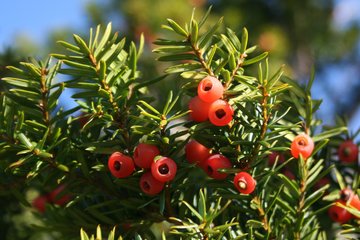A jigsaw puzzle of plant cells
The epidermal cells of many plant organs resemble the pieces of a jigsaw puzzle helping them withstand the high pressure in their interior
Plant cells are under tremendous pressure. To prevent themselves from bursting, plants had to come up with something unique: According to scientists from the Max Planck Institute for Plant Breeding Research in Cologne, epidermal cells with an irregular shape can withstand their internal pressure better than round and other uniformly shaped cells.

Non-woody plants have no skeleton to support them. Therefore, in order to stay upright and defy environmental forces, their cells are constructed like inflated balloons. Because cytoplasm contains higher concentrations of dissolved substances than the cell's surroundings, water on the outside flows into the cell, generating what is known as turgor pressure. Turgor pressure, which can reach 20 bar or more, presses against the cell wall. To resist this pressure the wall is made of a rigid gel reinforced with stiff cellulose fibres, which are constantly rearranged to allow the cell to grow.
However, according to the findings of the Cologne-based researchers, the cell wall alone is not always sufficient to prevent plant cells from bursting. Whereas the pressure of a cell in the interior of a plant is offset by that of neighbouring cells, surface cells are exposed to especially high stress.
Could this perhaps explain the extraordinary shape of the surface cells of many plants? Epidermal cells look like puzzle pieces with their interlocking tabs and pockets. Using a specially developed computer model, the scientists calculated the internal pressure in cells of various shapes. "Thanks to their irregular shape, surface cells are able to significantly reduce mechanical stress caused by turgor pressure. Cells shaped like puzzle pieces need less cell wall to resist turgor, potentially saving the plant vital resources," says Richard Smith of the Max Planck Institute for Plant Breeding Research.
Form follows growth

Not all plant epidermal cells, however, are shaped like puzzle pieces. The scientists therefore compared various plants and found that cell shape depends on how an organ grows: "Organs with a preferential direction of growth, such as roots and stems, usually have cylindrical cells. By contrast, leaves, which grow more or less uniformly in all directions, almost invariably have irregularly shaped epidermal cells," Smith says. In experiments with genetically modified plants they show that the shape of epidermal cells depends on the type of growth. For example, if thale cress (Arabidopsis thaliana) is genetically modified so that its leaves have a predominant direction of growth, the epidermal cells take on a regular instead of a puzzle-piece shape.
Long thin cells, or those with a puzzle shape, have no large open areas, that would tend to bulge out without the support from cross-walls, and are able to better withstand turgor pressure. The researchers confirm this hypothesis with a mechanical computer model of a virtual plant tissue. They then go on to develop a growing model where cells alter their shape in response to stress. When the scientists grow a virtual epidermis in all directions, the epidermis resembles a jigsaw puzzle. By contrast, when the epidermis grows mainly in one direction, the cells are uniformly shaped. By changing other parameters, such as the maximum size of the largest open area, or the stiffness of the wall, the program is even able to produce other cell shapes that occur in nature.
Communication without signaling molecules?
According to their model, the various cell shapes occur without the need for cells to communicate with each other via chemical messengers. Much work has focused on the idea that a cell that wants to form a tab could use such a chemical messengers to tell its neighbour to make room and form a corresponding pocket. “We don’t know if chemical messengers are involved, but our models show it’s not required,” Smith says. Instead, cells could also communicate and trigger shape changes purely through the forces they exert on their neighbors.
The research provides insight into how geometry affects the mechanics of the cell, and how the plant might use cell shape to optimize its use of resources as the plant “grows” its structure. Today there exist many biologically inspired synthetic materials. The puzzle shape, and how plants exploit it, could provide valuable insight into the design of new materials and structures, potentially informing the design of buildings that depend on inflatable “cells” for their shape. Such applications will become especially relevant as scientists begin to explore materials that grow.
HR













